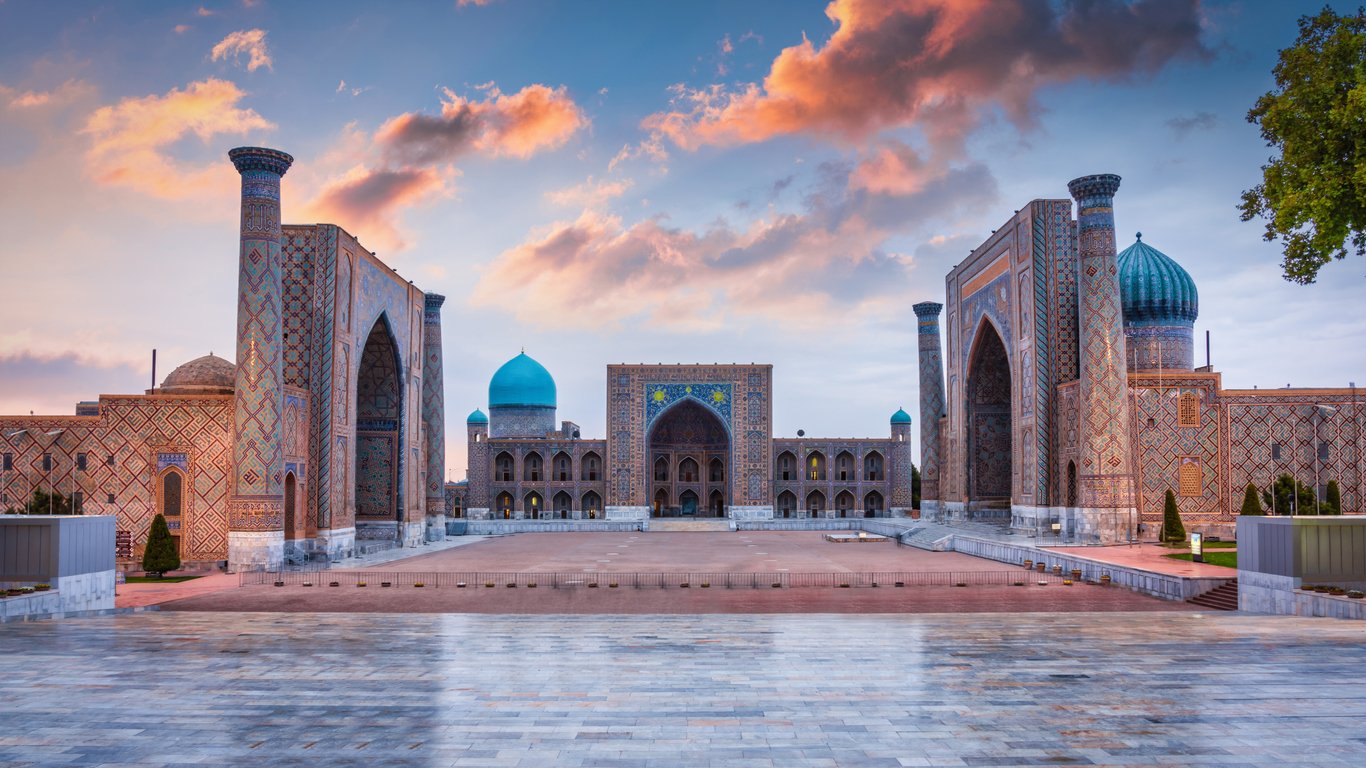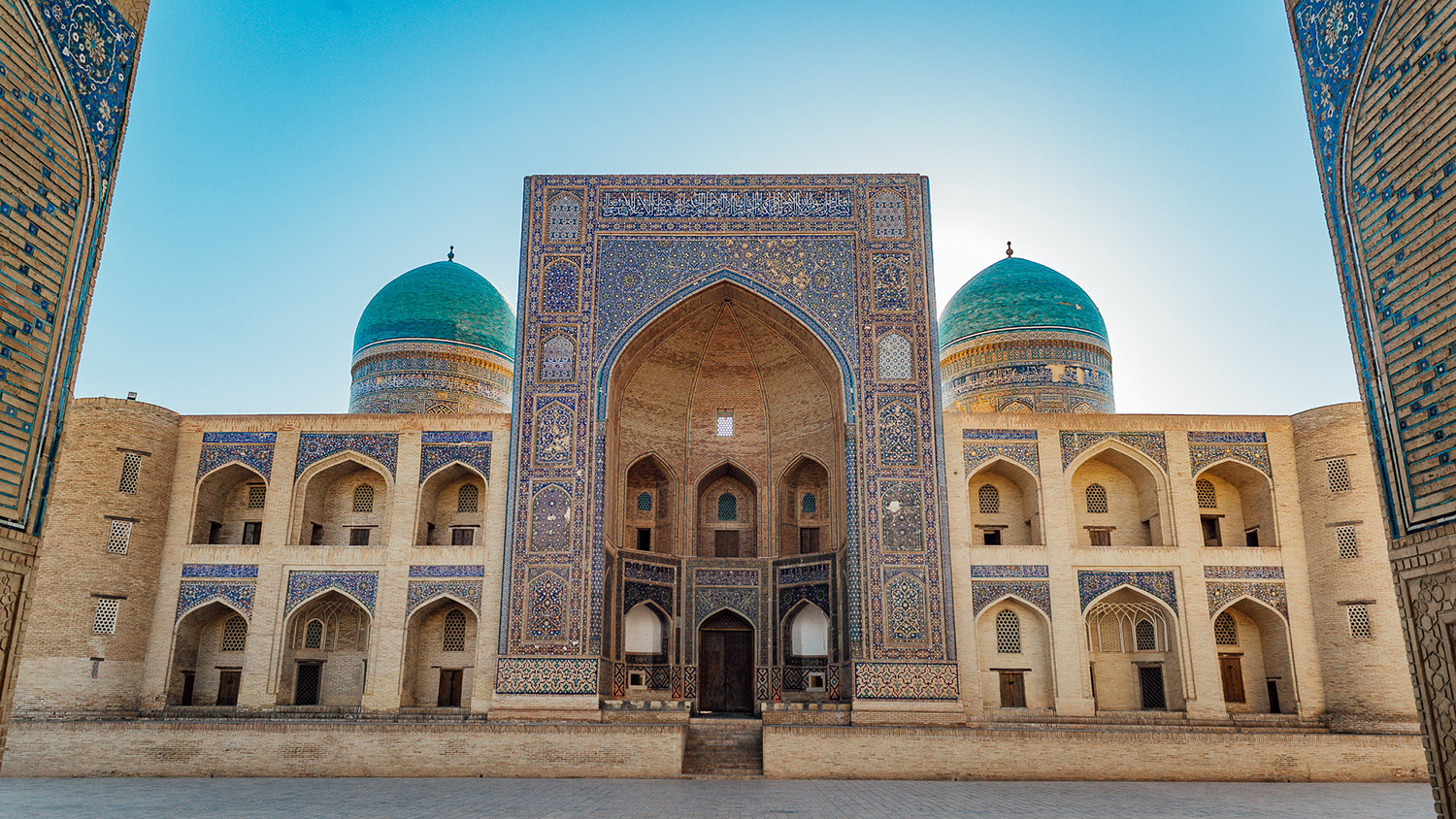



Bukhara is an ancient city in the central Asian country of Uzbekistan. It was a prominent stop on the Silk Road trade route between the East and the West, and a major medieval center for Islamic theology and culture. It still contains hundreds of well-preserved mosques, madrassas, bazaars and caravanserais, dating largely from the 9th to the 17th centuries.
The best time to visit Bukhara is during the spring (April to early June) and autumn (September to early November) months. These seasons offer mild, pleasant weather, perfect for exploring the city’s ancient architecture and rich cultural heritage.
Weather: Temperatures range from 15°C to 25°C (59°F to 77°F), which is comfortable for sightseeing.
Advantages: The city is green and vibrant, with blooming flowers in gardens and parks. It’s also less crowded than in the summer, so you can enjoy a more relaxed experience.
Ideal for: Outdoor activities, cultural exploration, and visiting Bukhara’s historic sites.
Weather: Temperatures range from 20°C to 30°C (68°F to 86°F) in September, gradually cooling to around 10°C to 20°C (50°F to 68°F) by November.
Advantages: The weather is still warm but not too hot, and it’s harvest season, so you can enjoy local produce and food. Autumn also brings vibrant colors to the city and surrounding landscapes.
Ideal for: Sightseeing, cultural festivals, and outdoor activities.
Weather: Summer temperatures in Bukhara can soar above 40°C (104°F), especially in July and August. The heat can be intense and exhausting, making outdoor sightseeing uncomfortable during midday.
Disadvantages: The heat can be oppressive, and many outdoor attractions may be difficult to fully enjoy.
Ideal for: If you’re prepared for the heat and want to avoid crowds, but otherwise, summer should be avoided for comfort.
Weather: Winter temperatures in Bukhara can drop to 0°C (32°F) or lower, and occasional snow can occur. While cold, the city is quieter, and hotel rates are lower.
Advantages: Winter is a great time for those who prefer fewer tourists and lower prices. It’s also a time to experience local life at a slower pace.
Disadvantages: Cold weather may make outdoor sightseeing uncomfortable, and some attractions may have shorter hours.
Best Time to Visit: Spring (April to June) and Autumn (September to November) offer the best weather for exploring Bukhara’s ancient sites and enjoying local culture. These seasons have mild temperatures and fewer crowds, making it ideal for sightseeing.
4o mini
By Air: Bukhara has its own international airport (Bukhara International Airport), which is connected by flights from Tashkent, Moscow, and other regional cities.
By Train: Bukhara is well-connected by Uzbekistan’s high-speed rail network. The Afrosiyob train from Tashkent takes about 4 hours.
By Road: You can also travel to Bukhara by bus or car from Tashkent, Samarkand, or other nearby cities. The drive from Samarkand to Bukhara is around 4-5 hours.
Ark Fortress: A massive fortress that dates back to the 5th century. It once served as the residence of the Bukhara rulers. You can explore its walls, courtyards, and museums to learn about the history of the city.
Registan Square (Bukhara): While Samarkand's Registan is more famous, Bukhara's Labi-Hauz complex (with a beautiful pool surrounded by madrassas) is a quieter and equally fascinating historical site.
Bolo Haouz Mosque: Known for its stunning wooden pillars and impressive architecture, this mosque is a true example of Bukhara’s ancient Islamic heritage.
Ismail Samani Mausoleum: A 10th-century mausoleum built for the founder of the Samanid dynasty. It’s one of the oldest monuments in Central Asia and is famous for its unique brickwork and design.
Chor Minor: A distinctive building with four minarets, Chor Minor is one of Bukhara's most iconic landmarks and a beautiful example of Central Asian architecture.
Trading Domes (Toki): Bukhara is known for its covered markets or "trading domes," where you can shop for local crafts, textiles, carpets, and spices. Toki Zargaron is one of the most famous.
Bukhara’s Madrasahs: Bukhara is home to several beautiful madrasahs (Islamic schools), such as Madrasa of Ulugh Beg and Kukeldash Madrasa. Many of them are still active as educational institutions.
Explore the Old City: Wander through the historic center of Bukhara, which is a UNESCO World Heritage site. Explore narrow alleys, beautiful mosques, and madrassas, and experience the city's centuries-old charm.
Take a Traditional Tea at a Caravanserai: Experience Central Asian hospitality at one of the historic caravanserais, such as the Magok-i-Attari mosque, and enjoy a cup of traditional tea.
Visit the Bukhara Bazaar: Shop for carpets, textiles, silk, spices, and handicrafts at the local bazaars like Toki Sarrofon and Toki Telpak Furushon.
Relax by a Hammam: Visit one of Bukhara’s traditional hammams (bathhouses) for a relaxing experience, many of which have been in operation for centuries.
Cultural Performances: Attend a local music and dance performance, often held in the evenings at historical sites, offering an insight into the region’s folk traditions.
Luxury:
Lyabi-Hauz Hotel: Located next to the famous Liabi-Hauz complex, this luxury hotel offers a comfortable stay with a touch of historical charm.
Amir Resort Hotel: A higher-end option with modern amenities and proximity to the city center.
Mid-Range:
Hotel Grand Bukhara: A comfortable, centrally located hotel offering excellent service and easy access to attractions.
Minzifa Hotel: A small boutique hotel known for its excellent service and unique traditional design.
Budget:
Guesthouses: Bukhara offers a variety of affordable guesthouses, especially in the old city. Sofa Bukhara is a popular choice for budget travelers.
Bukhara Hostel: A simple and affordable hostel for those looking for a no-frills place to
Plov (Pilaf): Like Samarkand, Bukhara is famous for its plov, a hearty rice dish typically cooked with lamb, carrots, onions, and a variety of spices. It’s a must-try dish at any local restaurant.
Shashlik: Grilled skewers of meat, often served with fresh flatbread, salads, and vegetables.
Samsa: Savory pastries filled with minced meat or vegetables, perfect for a quick snack while exploring the city.
Lagman: Noodle soup served with meat and vegetables.
Top restaurants:
Tehran Restaurant: A popular spot offering authentic Uzbek dishes, including plov and shashlik.
Minzifa Restaurant: Known for its cozy atmosphere and delicious local dishes.
Bukhara Chai Khana: A traditional tea house where you can try various Uzbek delicacies.
Islamic Heritage: Bukhara has deep Islamic roots, and the city’s architecture, mosques, and madrassas reflect this cultural influence. Many locals continue to practice Islam, and visiting the mosques provides an opportunity to witness daily religious life.
Craftsmanship: Bukhara is famous for its traditional crafts, including silk weaving, carpet-making, and ceramic production. Local artisans often sell their goods at bazaars.
Hospitality: Like much of Uzbekistan, Bukhara’s locals are known for their warmth and hospitality. Visitors are often welcomed with a cup of tea or invited to share a meal.
Music & Dance: Traditional music, including maqom (classical music), and dance are important cultural elements in Bukhara. You can often find performances in cultural centers or historical venues.